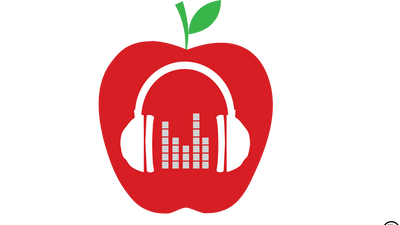Key Takeaways:
| Topic | Takeaway |
|---|---|
| Benefits of Headphones |
|
| Top Apps and Websites |
|
| Implementation Tips |
|
| Headphone Selection |
|
| Headphone Safety |
|
Headphones are becoming an increasingly common sight in today's classrooms. From young students to teens and adults, headphones allow users to immerse themselves in audio content while minimizing external distractions. This makes them an excellent tool for focused learning. Fortunately, many educational apps and websites are now optimized specifically for use with headphones.
How Headphones Enhance Learning
Headphones provide a variety of benefits that can enhance learning in the classroom:
- Focus - By blocking out ambient noise, headphones help students stay focused on instructional audio or voiced narration for apps and websites. This improves focus and information retention.
- Reduced Distractions - Using headphones eliminates distracting noises like classmates chatting or shuffling papers. Students can concentrate fully on their work.
- Privacy - Headphones give each student a measure of privacy and the ability to work at their own pace without disrupting others.
- Collaboration - Headphones allow students to collaborate via educational apps and websites without disturbing the whole classroom.
- Increased Engagement - Interesting audio content tends to increase student engagement and motivation to learn.
Top Educational Apps and Websites for Headphones
Khan Academy
This popular free learning platform offers over 5,000 video lessons covering math, science, history, grammar, and more. The clear narration makes it ideal for headphone use.
Duolingo
This free app uses audio lessons to help students learn new languages. It also pronounces vocabulary words and phrases.
Prodigy Math Game
Prodigy is a curriculum-aligned math game for grades 1-8. The app uses audio instructions and feedback to guide students as they practice math skills.
Code.org
Code.org offers free coding lessons for students at all skill levels. The spoken lesson guides make coding easier to understand.
Scratch
Scratch uses block coding to teach programming concepts. The audio cues help guide students as they build projects using code.
Minecraft: Education Edition
This version of Minecraft boosts creativity, problem-solving, and collaboration. The headphone-friendly gameplay teaches science, history, and coding skills.
Using Apps and Websites with Headphones
Here are some tips for using educational apps and websites effectively with headphones:
- Carefully select apps and websites that align with your students' curriculum, skill level, and interests. Avoid content that's too advanced or juvenile.
- Allow adequate time for students to fully engage with apps and websites. Rushing through defeats the purpose.
- Provide clear instructions on how students should use headphones to navigate through apps and websites.
- Circulate to monitor students' progress. Provide assistance if they seem confused or off task.
- Have students collaborate occasionally to share observations or solve problems together.
- Ask students to summarize or explain what they learned after using apps and websites with headphones.
Choosing the Right Headphones
Not all headphones are created equal. Be sure to select an appropriate model to use with apps and websites in the classroom. Consider:
- Comfort - Headphones shouldn't cause pain or be distracting to wear. Look for padded ear cups and adjustable headbands.
- Volume Limits - Purchase headphones that allow you to set maximum volume levels to protect students' hearing.
- Noise Cancellation - Noise cancelling or noise isolating headphones block out ambient sounds. This improves focus on audio content.
- Corded vs Wireless - Corded headphones avoid battery or connectivity issues. But wireless models offer more freedom of movement.
- Durability - Look for sturdy headphones that can withstand classroom use. Replaceable parts are also a plus.
- Cost - Inexpensive headphones often break easily. But you need not spend a fortune either. Compare brands to find the best value.
Headphone Safety Tips
Follow these tips to keep students safe when using headphones:
- Set volume limits on headphones to avoid noise-induced hearing loss.
- Encourage students to take occasional "listening breaks" to protect their hearing.
- Show students how to correctly put on and adjust headphones for comfort.
- Require supervised headphone use to discourage misuse or overuse.
- Store headphones properly in a labelled bin or pouch to prevent damage.
- Remind students to be aware of their surroundings when removing their headphones.
Conclusion
Educational apps and websites optimized for headphones are engaging learning tools for today's students. By selecting high-quality content and headphones, providing clear instructions, and promoting safe listening habits, teachers can successfully leverage these apps and websites to boost learning, collaboration, and focus in the classroom. The private, distraction-free audio environment headphones provide will support improved outcomes across a wide range of subjects and grade levels.



